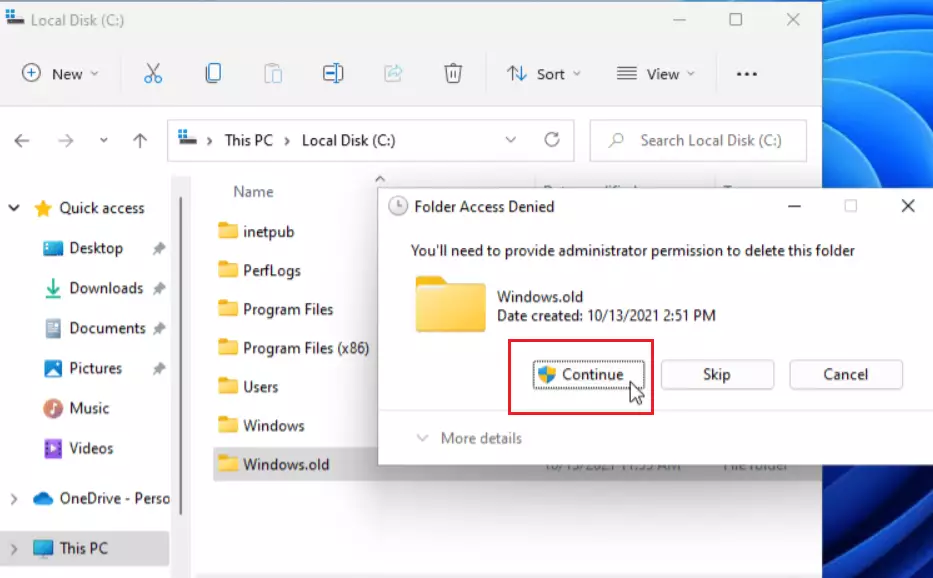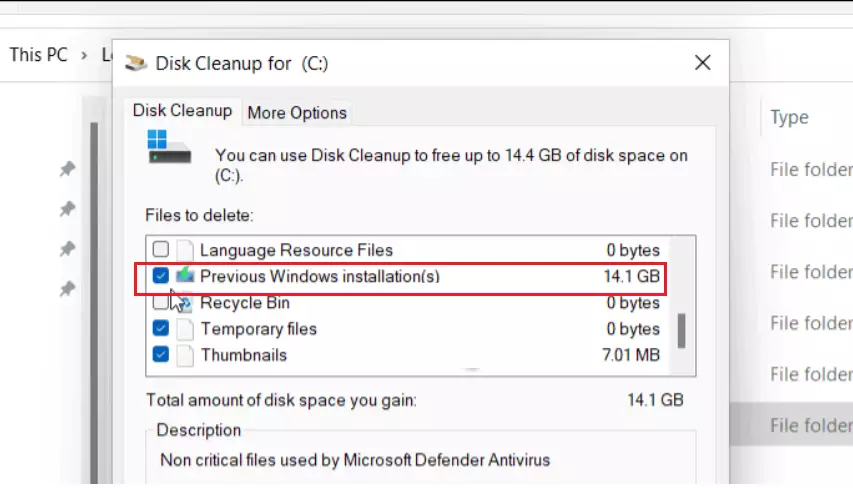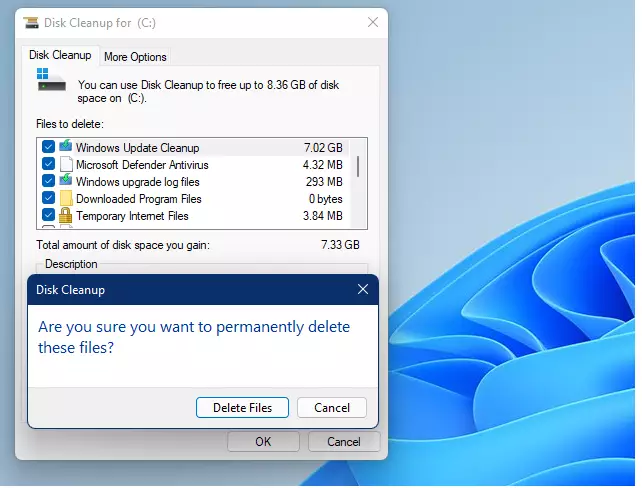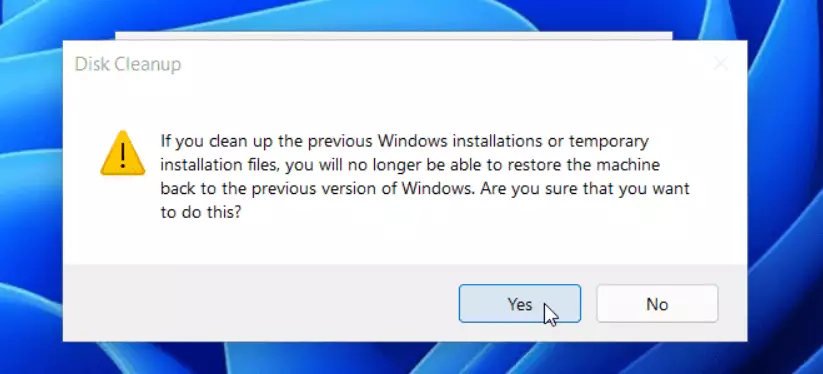This article explains how to delete Windows.old folder after upgrading to Windows 11.
If you’ve successfully upgraded to Windows 11, Windows will create a Windows.old folder on your system drive.
This Windows.old folder contains any old Windows installation files and other system data from your previous operating system. Windows uses this folder to make it easy to roll back the upgrade and return to the previous version you upgraded from. If you feel comfortable with Windows 11 and think you’re not going back, delete Windows.old folder should be safe to do.
Most people would want to delete this unused folder because it’s quite large, and deleting it will free up some storage space on your computer.
Windows 11 also has a built-in drive optimization task that will eventually delete the Windows. You can manually delete the old folder to see immediate benefits without waiting for Storage Sense to clean up the folder.
To manually delete the Windows. Old folder, follow the steps below.
How to manually delete the Windows.old folder after upgrading to Windows
As mentioned above, Windows automatically creates a Windows.old folder after a successful upgrade to another version. If you recently upgraded to Windows 11, you can manually delete that folder using the steps below.
First, open File Explorer and browse the Windows.old folder.
In File Explorer, browse to the Local Disk (C:). You’ll get there quickly if you click in the This PC folder in the left navigation window.
In there, you should see the Windows.old folder along with the standard folders in Windows 11.

Assuming you’re happy to delete the Windows.old folder, right-click the folder in File Explorer and press Delete to proceed.
Windows will prompt you with a message that you’ll need administrator permission to delete the folder. If you’re logged in as an administrator or member of the administrator group, simply click Continue.

The folder will be deleted from your computer.
How to use the Disk Cleanup tool to delete Windows. old folder
You can also immediately delete Windows.old folder using the Disk Cleanup tool in Windows 11.
First, click the Start menu, then search for Disk Cleanup; under Best match, select Disk Cleanup app as shown below.

Press the Cleanup System Files button at the bottom when the Disk Cleanup window opens.

The Disk Cleanup tool might take a few minutes to scan your computer for unused files, depending on the speed and size of your hard drive.
Once the tool finishes scanning your drive, it will show items you can safely delete from your drive to free up space. You should see the Previous Windows installation(s) item on the list: the Windows.old content.

You can check all the items you want to remove. It is safe to check all and click the OK button. You’ll get a prompt to confirm that you want to delete the files.

You may also get a second prompt confirming that you want to delete Windows or temporary installation files. Click Yes to confirm and delete.

You can also configure Storage Sense to automate this process and clean up old and temporary files in Windows 11. The post below shows you how to use Storage Sense in Windows 11.
How to use Storage Sense in Windows 11
That should do it!
Conclusion:
In summary, here are the key points to remember about deleting the Windows.old folder after upgrading to Windows 11:
- The Windows.old folder holds files from your previous Windows installation and can be deleted if you’re confident you won’t revert to the older version.
- Removing this folder can free up significant storage space on your hard drive.
- You can manually delete the folder through File Explorer or use the Disk Cleanup tool for a more automated approach.
- Always ensure you have the administrator permissions before deleting system files.
- Consider configuring Storage Sense to automate the cleanup of old and temporary files in the future.
By following these steps, you can maintain a clean and efficient system post-upgrade.

Leave a Reply